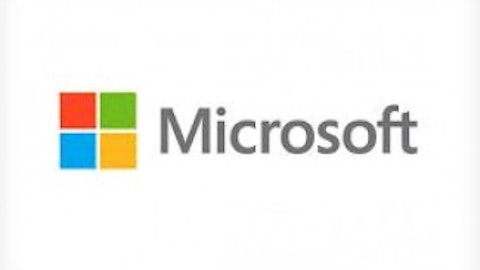A few months ago, some Harvard Business School professors came out with a study on what factors drive analyst buy recommendations. Read on, and I’ll explain the problem with analyst recommendations, what the professors found, and how you can profit from all this.
Wall Street recommendations
Wall Street analysts have a variety of conflicts of interests and are far too positive; as such, their recommendations are known to not be that useful. Being negative is hard for analysts, as there really is no incentive for them to be negative. Negative reports don’t get people excited, don’t drive much business, and often management teams will stop speaking with analysts who are negative. Also, if an analyst makes a small error in a negative report, investor relations departments are not forgiving, whereas in a positive report, IR departments are much more forgiving of small errors.

Top factors
Given their overly positive bent, what do you think would be analysts’ top factors?
Take a moment to think about it…
The results, which are organized by the location of the analysts, are interesting both for what analysts found very important and what they found least important.
Factors that drive buy recommendations for analysts
(A = Asia, E = Europe, L = Latin America, U = U.S.)
| Factors / Importance | Low | Moderate | High | Very High |
|---|---|---|---|---|
| Well-communicated strategy | ALU | E | ||
| Ability to execute strategy | AL | U | E | |
| Governance strength | AL | E | U | |
| Quality of top management | L | AEU | ||
| Innovativeness | A | U | E | L |
| Low-price strategy | AL | E | U | |
| Superior products or services strategy | AEL | U | ||
| Balance sheet strength | AELU | |||
| Culture | AEL | U | ||
| High performance compensation | AEL | U | ||
| Projected industry growth | E | ALU | ||
| Industry competitiveness | L | AEU |
Source: Harvard Business Review, “What Makes Analysts Say ‘Buy.'”
Very important
Analysts called out projected industry growth and quality of top management as factors they consider to be very important. While it is good to hear that analysts find management extremely important, it is worrisome that projected industry growth is the other most important factor to them.
Studies have shown that analysts are terrible at estimating growth in both the short and long term, consistently overestimating growth. A study that looked at analyst estimates from 1984 to 2006 by Patrick Cusatis and J. Randall Woolridge of Pennsylvania State University found that actual earnings came in roughly 40% below analyst expectations.
| Time Frame | Estimated Growth | Actual Growth |
|---|---|---|
| 1 year | 13.8% | 9.8% |
| 5 years | 14.9% | 9.1% |
Source: “The Accuracy of Analysts’ Long-Term Earnings-Per-Share Growth Rate Forecasts,” Cusatis and Woolridge.
Similarly, a study by McKinsey entitled “Equity Analysts: Still Too Bullish,” which looked at analyst estimates from 1985 to 2009, found a slightly higher gap between actual earnings and analyst expectations. The McKinsey study found actual earnings growth was typically 6%, with estimates ranging from 10% to 12% a year.
Favoring projected industry growth can make analysts little more than cheerleaders for growth stocks. This can cause stocks to rise much more than their growth prospects would reasonably allow. Good examples of stocks where this happened or is possibly happening include:
| Stock | # of Analysts | % With Buy/Strong Buy Rating | % With Sell Rating |
|---|---|---|---|
| Apple Inc. (NASDAQ:AAPL) | 39 | 85% | 0% |
| Las Vegas Sands Corp. (NYSE:LVS) | 20 | 75% | 0% |
| 3D Systems Corporation (NYSE:DDD) | 7 | 57% | 0% |
Source: Zacks Investment Research.
Analysts kept extremely bullish ratings on Apple Inc. (NASDAQ:AAPL) as it grew revenue nearly 75% a year from 2010 till 2012. Apple’s stock got ahead of itself in 2012, hitting a high of $700 per share before coming back down to the $400 level, where it sits now. Analysts kept strong buy ratings on Apple throughout 2012. Anyone who listened and bought and held Apple Inc. (NASDAQ:AAPL) at any point in 2012 is at best even, at worst down 40%.
3-D printing stocks also got ahead of themselves, as 3D Systems Corporation (NYSE:DDD) and Stratasys, Ltd. (NASDAQ:SSYS) both rose over 150% in 2012 before coming back down as investors cooled on their prospects.
Analysts’ blind spot
On the opposite side of the spectrum, analysts around the world all listed balance sheet strength as being of very low importance.
Balance sheets don’t matter till they do. This can lead to absolute disasters when investors ignore massively leveraged companies. A good historical example is Las Vegas Sands Corp. (NYSE:LVS) around 2006-2007. The company pursued an ambitious expansion plan by building a casino in Macao funded by debt. The stock hit a high of nearly $140 per share in 2007 before almost going bankrupt in 2009, hitting a low near $1.50 in March 2009. Throughout this time, the average analyst rating was “buy” until the stock hit $10 a share, at which point the average analyst rating fell to just “hold.”
There is a positive aspect to analysts ignoring balance sheets: Companies with exceptionally strong balance sheets can be undervalued by the market if the company experiences any headwinds and investors sell off the stock. While analysts are rarely negative, investors can profit from their balance sheet blindness by avoiding highly leveraged companies and generally paying attention to balance sheets.
The article Profit From Wall Street Analysts’ Blind Spot originally appeared on Fool.com.
Dan Dzombak can be found on Twitter @DanDzombak or on his Facebook page, DanDzombak. He has no position in any stocks mentioned. The Motley Fool recommends 3D Systems, Apple, and Stratasys (NASDAQ:SSYS). The Motley Fool owns shares of 3D Systems, Apple, and Stratasys and has the following options: Short Jan 2014 $36 Calls on 3D Systems and Short Jan 2014 $20 Puts on 3D Systems.
Copyright © 1995 – 2013 The Motley Fool, LLC. All rights reserved. The Motley Fool has a disclosure policy.




